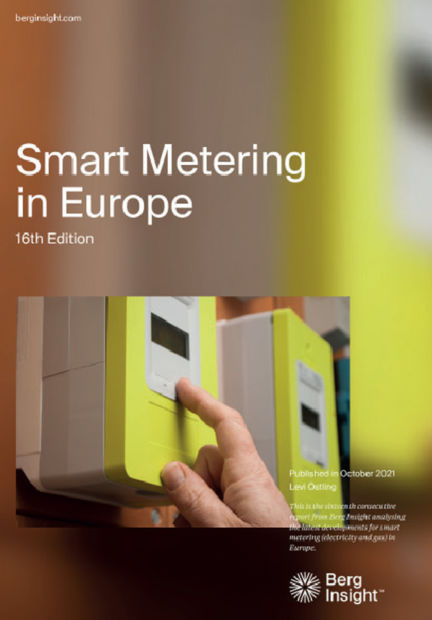European smart gas meter penetration hits 33%
- November 15, 2021
- Steve Rogerson

The penetration of smart gas meters in Europe reached 33 per cent in 2020, according to IoT analyst firm Berg Insight.
The installed base of smart gas meters in Europe amounted to 39 million units in 2020, equal to a penetration rate of 33 per cent. Berg predicts the installed base will continue to grow at a compound annual growth rate of 10.1 per cent between 2020 and 2026, reaching 70.1 million units at the end of the period.
Annual shipment volumes amounted to 6.5 million in 2020 and are expected to stay at similar levels during 2021-2022 before gradually decreasing along with the completion of several large-scale nationwide rollouts.
Italy, France, UK and Netherlands were the most active markets in 2020, together accounting for more than 95 per cent of all smart gas meter shipments during the year. While the rollouts in Italy, France and Netherlands will soon be completed, the UK market is, on the other hand, after multiple delays expected to ramp up yearly installations to reach a high of 3.0 to 3.6 million units during 2022-2025. Belgium and Ireland are two other markets that are expected to contribute with significant shipment volumes in the next few years.
The smart gas meters deployed in Europe have over the past years not been networked in quite the same way as their counterparts in the electricity sector. A common model, seen for example in the UK, Netherlands and Belgium, is to use a local wireless or wired interface to transmit gas data via the customer’s smart electricity meter.
A mix of 169MHz RF and 2G and 3G cellular communications has meanwhile been the primary model for the largest projects in which smart gas meters have been deployed independently of smart electricity meters, such as in Italy and France.
A change of the status quo might now, however, be on the horizon as new types of LPWA technologies have become more readily available in the past couple of years.
“2020 was a significant year for smart gas metering in Europe as the Italian gas sector became the first in Europe to initiate large-scale adoption of NB-IoT as a primary meter connectivity choice,” said Levi Ostling, senior analyst at Berg Insight.
Another emerging technology trend is the anticipated increase in the use of hydrogen in European gas supply operations.
“As the properties of hydrogen differ significantly from those of natural gas, meter vendors will have to put in place relevant technological and strategic roadmaps in order to position themselves in the new European renewable energy sector,” said Ostling.




